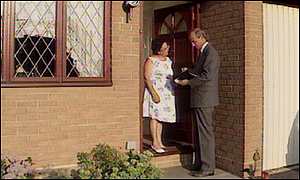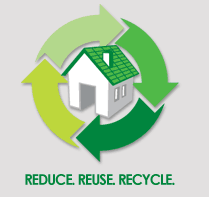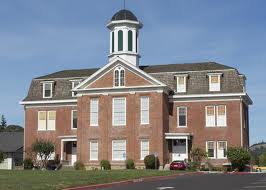Archive for August, 2011
Discovery Park at UNT

University of North Texas began construction on a 1.5 million, 1200 square foot research facility called Discovery Park. The facility will be used for students and faculty who are involved in sustainable building and sustainable energy to test the technologies. Included are solar panels, geothermal and wind energy connected to a smart grid system. “It’s a facility that tests technology for buildings that will have net-zero consumption of energy,” said Costas Tsatsoulis, dean of UNT’s College of Engineering.
The discovery park building will be made up of removable walls and floors enabling researchers to test the effectiveness of new sustainable materials. 1/3 of the research facility will be a furnished living area and the other 2/3 will be a laboratory. The facility will be on a smart grid system and solar panels. The electricity generated will help power the lab, any extra energy will go back into the electrical grid.
A private company, Solar Logic, 5 students and 2 faculty members will use solar simulator testing to help develop a lightweight affordable way to produce solar power. Weather simulation will be used to test multiple projects simultaneously, testing products in different situations and locations. One of the goals is to produce smaller solar panels that that will stand up to the elements and make it more viable for businesses and home owners.
Jacobs Engineering Group Inc. and the general contractor Nouveau Construction, hope to have the project completed in early 2012. Funds from the higher education’s assistance from the state, operating funds and donations by Acme Brick, Axium Solar, Schneider Electric, Nuconsteel and Benchmark Precision Buildings are helping to fund the $1.5 million facility.
Advice From A Roofer
 Looking for a quality roof contractor can be deceivingly easy. Many times contractors will come with a large crew, fancy equipment and charismatic words that make the average homeowner feel comfortable. When it comes to finding the best roof contractor for replacing or repairing a roof, there are a few things every homeowner should know.
Looking for a quality roof contractor can be deceivingly easy. Many times contractors will come with a large crew, fancy equipment and charismatic words that make the average homeowner feel comfortable. When it comes to finding the best roof contractor for replacing or repairing a roof, there are a few things every homeowner should know.
Proof Is In The Pudding
Many states require roof contractors to be licensed and registered with the state or county. The problem is that enforcing this requirement is difficult and violators can be overlooked. Reputable contractors will be able to provide proof that they are registered with the local construction industries board, or equivalent. To protect yourself when looking for the right local roofer, it is important to ask for proof of their license or registration with the local government.
Roof contractors should also be able to provide proof of liability insurance. There have been cases in which a contractor, or their crew member, was injured on the job and sued the homeowner for damages. A professional roofer will carry their own liability insurance to cover their team in the event of accident or injury, as well as to cover any damages caused to the home during construction. Always make sure the roofing company is covered by a reputable insurance company before any work begins on your roof.
Call Ahead
Roofing companies may submit a bid to your private homeowners insurance to cover some, or all, of the costs for the roof work. As a homeowner, you should call your insurance company prior to selecting a contractor to find out what they will require in order to pay for the work. The insurance company may want to see multiple quotes, an inspection report verifying the necessity of the work and details from the contractors bid regarding the materials used. It is important you find out what the insurance company needs to protect yourself from fraudulent bids. If a contractor submits a bid to the insurance company fraudulently, you may be held responsible.
Seniors Targeted For Roofing Scams
Identity theft is the most prevalent white collar crime in America, but recent trends have begun to lean more towards scams. Sadly, the main target for such criminals is senior citizens. As the baby boomers begin to age, more senior citizens become the victim of many types of scams. These days, criminals are evolving with the times. As more new alerts are educating seniors about ways to look out for traditional scams, criminals are changing their tactics.
These days, criminals are evolving with the times. As more new alerts are educating seniors about ways to look out for traditional scams, criminals are changing their tactics.
Who Is At The Door?
It isn’t uncommon to have perfectly legitimate contractors leave flyers on the door advertising their services, some many even knock on the door to speak with a homeowner personally. It can be very difficult for some to determine who is legitimate and who is running a scam. Senior citizens are often easy targets for door-to-door “salesmen” as they tend to be more trusting and may not have anyone around to help them make choices.
Roofing scams have become increasingly popular, especially in established neighborhoods. Fraudulent contractors will knock on door, warning seniors about the damaged state of the roofs. With little ability to check the quality of their roof themselves, many seniors begin to trust what the contractor recommends. These scammers will arrange for an inspection to be completed to “verify” the existence of damage to the roof. Senior homeowners are lead to believe they can save money by replacing the roof with the contractor that caught the damage “just in time”.
The biggest problem: these fraudulent companies do not follow legal protocol. Many of these roof contractors fail to apply for, and obtain, the necessary permits for new roof construction. They rarely document their work or file the claim with the insurance company. The homeowner is left to foot the entire bill, usually without any record of the completed work. Without documentation of the work, these seniors are left without any warrant on the product or way to prove payment.
Protect Yourself
To prevent becoming a victim of roofing scams, follow these simple tips:
- Ask for references and credentials of any door-to-door vendor.
- Verify the contractor is licensed or registered with the county.
- Get inspections and quotes from multiple contractors.
- Always get documentation of the completed work, warranty of the product and a copy of payment to be filed to the insurance company.
Recycled Roofs Come From Many Sources
 The roof is the face of your home! A bad roof can quickly downgrade the look and appeal of your home. Luckily, there are many new roof materials that can improve the look of your home while working towards saving the environment.
The roof is the face of your home! A bad roof can quickly downgrade the look and appeal of your home. Luckily, there are many new roof materials that can improve the look of your home while working towards saving the environment.
Even better is the money that will be saved by reducing energy consumption. Many homeowners are cashing in on the advantages of installing “green” products in their homes; but with so many new, energy-efficient products it can often be overwhelming to decide which product is best for your home.
Reduce, Reuse, Recycle
Of all the recent trends in “going green”, many quality products are being made from sources we never would have guessed. There are many unusual products that can be recycled into a quality roof material. Things such as carpet, milk jugs, soda cans and tires can all be used in making new roof products.
- Milk jugs make for a great source of plastic that can be recycled into shingles. These shingles have a wood-like feel to them and look great. Recycled plastic shingles are modeled to look like cedar shingles, except they provide more resistance to weather elements and pests. These shingles are mold, insect, bacteria and moisture proof; proving to be one of the most maintenance-free products on the market today.
- Recycled carpet also produces a wood-like shingle. These shingles are light weight and easier to install. Shingles made from old carpet are more environmentally friendly than traditional asphalt shingles, as they do not give off toxic chemicals. Between reducing the large amount of space that is taken up in landfills by carpet, along with reusing it to produce an environmentally conscious product, makes recycled carpet shingles a great choice for homeowners.
- Roofing shingles made from recycled tires are great insulators and can drastically reduce the energy consumption of a home. These shingles are highly durable, providing great resistance to high winds and extreme weather elements. Recycled tire shingles are also one of the most fire resistant roof materials on the market.
Just think about all the trash you throw out each week; much of this trash is able to be recycled into many great products. Not only does the house get a new roof, but the landfills will get a much needed break from overcrowding.
Oregon Historical Museum Gets New Roof with an Old Look

The Benton County Historical Museum in Philomath Oregon will be getting treated cedar shingles reminiscent of the original shake roof from 1867. The flashing and metal coverings will also be repaired or replaced.
The building was originally constructed for Philomath College which operated until 1929. The building was then used as a church until 1968. In the 1970’s the building was saved from demolition and in the 1980’s the structure was turned into the Benton County Historical Museum. The museum currently preserves historical artifacts, photographs and manuscripts and is used as a research library and art gallery.
The Benton County Historical Society is working to preserve the building to it’s original state. Executive director Irene Zenev says the new shingles are more historically accurate. Since the building is on the National Register of Historic Places they feel obligated to help return the building to its original look.
The work started on July 25th by Sprick Roofing of Corvallis and ReConstruction, Inc. of Albany, Oregon. Funding for the project is coming from a grant from the Kinsman Foundation in Portland, Oregon and the estate of Don and Krystal Kabler.
New Zealand Stadium gets Transparent Roof

The largest transparent polymer or plastic covered structure in the Southern Hemisphere was recently completed at the Forsyth Barr stadium, in Dunedin New Zealand. The clear ethylene tetrafluoroethylene material was originally developed by the space industry. The 7.7 acre clear roof allows grass to grow inside the enclosed arena while protecting the fans from the elements.
The stadium was completed on time and on budget in time for the Rugby World Cup tournament. The ETFE (ethylene tetrafluoroethylene) covers the roof and part of the facades allowing maximum sunlight and fresh air onto the field. “The new roof means we can maintain a constant temperature and grow a stronger grass which will not become boggy because it will never rain, snow, or hail inside the stadium during a game at Forsyth Barr.” Said Ron Van Sluijs, project architect of Forsyth Barr stadium.
The stadium will be New Zealand’s largest indoor venue able to seat 30,000 fans. The first rugby game will be held on August 7, 2011, the North Otago vs. West Coast 2011 Heartland Championship. Elton John plans to perform a concert on November 25, 2011. 20,000 permanent and 11,000 temporary seats are angled allowing spectators to be closer to the action.
Construction began in June 2009 by Local firm Jasmax and the architecture firm Populous designed the Forsyth Barr stadium.
Roofing Jobs Are Hot
With temperatures here in Dallas over 105 and the heat index of 110, roofing crews and contractors are having a hard time staying cool. At the beginning of August central Texas has already had over 30 consecutive days of over 100 degrees with no relief in sight.
Some contractors are asking homeowners to postpone repairs until there is a break in the heat. Besides being dangerous for the crew, shingles can become fragile and brittle in the intense heat so crews walking on the shingles can cause more damage.
The crews are starting as early as 6 a.m. and putting in 14 hour days on roofs where temperatures can reach 130-140 degrees. The roofers are taking extra precautions to stay cool. Wetting down the shingles and using the water hose to cool themselves down, and by taking more frequent and longer breaks. Staying hydrated in humid temperatures is extra important as sweat will not evaporate into humid air.
Heat strokes, heat exhaustion and dehydration are real issues when you work out in the heat all day. Approximately 700 people die each year due to heat-related illness, according to the U.S. Centers for Disease Control and Prevention.






